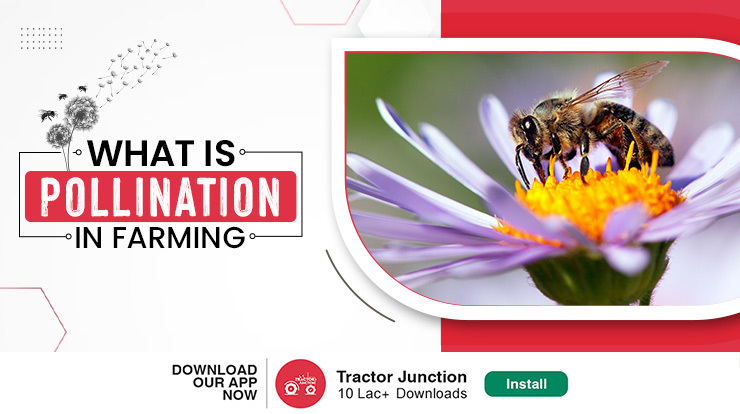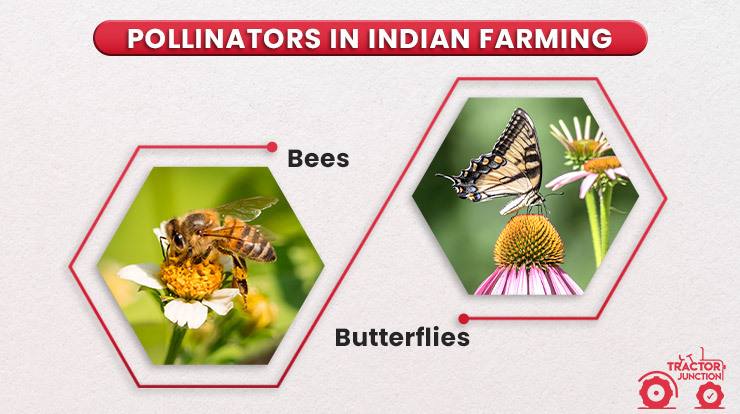
Farming is at the core of India’s economy and sustains the livelihoods of millions. A crucial aspect of successful farming is pollination, a natural process that directly impacts crop yield and quality. In this beginner’s guide, we will delve into the fascinating world of pollination, exploring what it is, how it occurs, and its significance in Indian agriculture.
What is Pollination?
Pollination is the remarkable process of transferring pollen grains. This act is vital for plants’ reproduction, as it allows them to produce seeds and eventually bear fruit.
While some plants can self-pollinate, many rely on external agents to facilitate this process. These agents include the wind, water, and, most importantly, pollinators such as bees, butterflies, birds, and insects.
Now that we understand what pollination is, let’s explore the different types of pollination and how they play a role in Indian farming.
Types of Pollination in Indian Farming
In Indian agriculture, there are two main types:
- Self-pollination – It occurs when pollen from the anther of a flower is transferred directly. Moreover, this process is common in certain crops like wheat, rice, and tomatoes.
- Cross-Pollination – Transfer happens from the anther to the stigma of another plant, either of the same species or a different. Hence, this process encourages genetic diversity, resulting in healthier and more resilient crops.
Read:- Saffron Cultivation in India
The Role of Pollinators in Cross-Pollination
Pollinators play a pivotal role in facilitating cross-pollination, some of them are –
- Bees, with their fuzzy bodies, are among the most efficient pollinators. As they visit flowers to collect nectar, pollen sticks to their bodies and gets transferred from one flower to another.
- Butterflies, with their vibrant colors and long proboscis, are also essential pollinators. Additionally, they are attracted to flowers and their sweet nectar, aiding in pollination as they move pollen grains.
 The Significance of Pollination in Indian Farming
The Significance of Pollination in Indian Farming
India is a land of diverse crops, from fruits and vegetables to cash crops like cotton. Hence, pollination is crucial for enhancing the yield and quality of these crops.
Increased Crop Yield and Quality
Proper pollination leads to increased crop yield, as it ensures the production of seeds and fruits. In the next generation, healthy seeds can be produced when pollen grains reach the stigma and fertilize the ovules.
Better Fruit Formation
In fruit crops like apples, mangoes, and oranges, successful pollination is crucial for fruit formation.
Without pollination, the fruits may be small, misshapen, or not form at all. Additionally, properly pollinated fruits are not only visually appealing but also have better taste and nutritional value.
Challenges to Pollination in Indian Agriculture
While pollination is a natural process, several factors pose challenges to efficient pollination in Indian farming.

Habitat Loss and Fragmentation
One of the most significant challenges is the loss of natural habitats due to deforestation and urbanization. Moreover, pollinators rely on a variety of plants for food and shelter, and the destruction of their habitats can lead to a decline in their populations.
Read More: Top 10 Famous Women Farmers in India
Pesticide Use
Excessive use of chemical pesticides can harm pollinators and affect their behaviour. Bees, in particular, are susceptible to pesticide exposure, leading to a decline in their numbers.
Promoting Pollination in Indian Farming
To ensure the continued success of pollination in Indian agriculture, farmers and policymakers can adopt pollination-friendly practices:

- Plant Native Flowering Plants: Cultivate native flowering plants on the farm to attract and provide food for pollinators.
- Reduce Pesticide Use: Implement Integrated Pest Management (IPM) strategies to minimize pesticide use and create safe environments for pollinators.
- Create Pollinator Habitats: Set aside small areas of the farm for pollinator-friendly habitats, such as wildflower meadows or bee boxes.
- Diversify Crops: Plant a diverse range of crops to provide a continuous source of food for pollinators throughout the growing season.
Beekeeping: A Success Story from KVK, Pune
In the jurisdiction of KVK, Pune, women farmers and traditional farmers have been cultivating a diverse range of crops. But, over the last 4 to 5 years, a concerning trend has emerged – the pollination rates of these crops have significantly declined. As a result, crop yields have plummeted by 20% to 70%, jeopardizing the livelihoods of the farming community.
After careful research and analysis, they identified beekeeping as a viable and profitable alternative income source for the farmers. Not only could beekeeping be financially rewarding, but it could also play a pivotal role in pollination.
The transition to beekeeping was not an easy one, as it required the farmers to undergo training and adopt new practices. So several key steps were taken to ensure the success of this initiative:
- Introducing Beehives: KVK Pune distributed beehives among interested farmers. They helped set up the hives in suitable locations within the agricultural fields, allowing the bees to have easy access to flowering crops.
- Beekeeping Training: Comprehensive training on modern beekeeping techniques, hive maintenance, and the behaviour of honey bees was provided to the farmers. Additionally, this enabled them to understand the bees’ needs and ensure their well-being.
- Promoting Sustainable Practices: KVK Pune emphasized sustainable beekeeping practices, encouraging the farmers to use natural methods and avoid the excessive use of chemicals in their agricultural fields.
- Integrating Beekeeping with Agriculture: Beekeeping was seamlessly integrated into the existing agricultural practices. Farmers strategically placed the beehives amidst their crops, which significantly improved pollination rates and crop yields.
- Value Addition: KVK Pune guided the farmers in processing and packaging honey and other bee-related products, thus adding value to their beekeeping venture.
The results of this initiative were remarkable. Besides this, with the presence of bees facilitating better pollination, a substantial increase is seen.
Conclusion
In conclusion, pollination is a crucial process in Indian farming. It directly affects crop yield and quality, emphasizing the significance of pollinators. Moreover, embracing pollination-friendly practices and beekeeping fosters a sustainable ecosystem and a promising future for Indian agriculture.
Frequently Asked Questions
1. What is pollination, and why is it important?
Pollination is the transfer of pollen from one flower to another, vital for plant reproduction and crop yield.
2. What is pollination? What are the types of pollination?
Pollination is the transfer of pollen. Types: self-pollination (within flower) and cross-pollination (between flowers).
3. What is direct pollination?
Direct pollination refers to self-pollination, where pollen transfers within the same flower or between flowers of the same plant.
4. What is pollination? What are some good examples?
Pollination is pollen transfer. Examples: Bees carry pollen between flowers, leading to fruit formation in apples and strawberries.
5. What is pollination? What are the types of pollination with examples?
Pollination is pollen transfer. Types: Self-pollination (wheat), Cross-pollination (apple trees).
Related blog
What is Apiculture? Know the Methods, Cost & Profits
Almond Farming in India – Steps, Yield & Top Producing States


 The Significance of Pollination in Indian Farming
The Significance of Pollination in Indian Farming